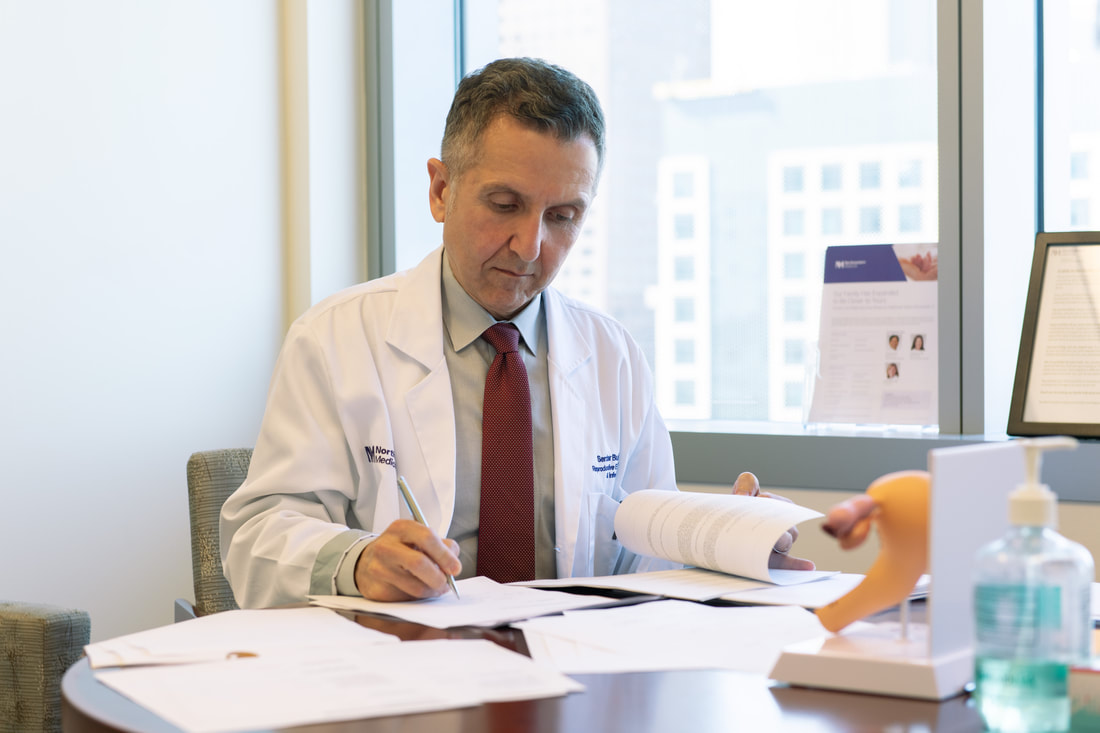What Is Endometriosis
|
Endometriosis occurs when tissue that makes up the lining of the uterus (endometrium) grows in other parts of the body. This can cause chronic inflammation that can result in scarring. It is most commonly found in the pelvic cavity and ovaries. Less commonly, these lesions may grow on the intestines and bladder, and rarely they may grow in the lungs or other locations within the body. Growths of endometriosis are almost always benign (noncancerous).
Endometriosis is a common disorder, most prevalent between the ages of 25 and 40 and affecting an estimated 5 percent to 10 percent of all women. Symptoms can vary; their intensity is not related to how severe the endometriosis is. Symptoms may worsen with time but tend to diminish during pregnancy and cease with menopause. Many women have no symptoms at all. Treatment choice depends on the patient’s symptoms, age, and desire to have children. Symptoms of Endometriosis
Although everyone may experience symptoms of endometriosis differently, the most common symptoms include:
Causes and Diagnoses of Endometriosis
The exact cause of endometriosis is unknown. It is likely that certain genes have a role, but there are many other contributing factors. Experts do agree that the hormone estrogen promotes the growth of endometriosis, and treatment often focuses on lowering estrogen levels. Specialists suggest that blood from a period may travel backwards (retrograde menstruation) through the fallopian tubes and into the abdominal and pelvic cavities. Scientists are looking at how the function of the immune system may also relate to the development of endometriosis. Risk factors Endometriosis can develop in any person with a uterus, but certain risk factors increase the likelihood of developing this condition, including:
Diagnoses The only way to diagnose endometriosis is with a surgical procedure called a laparoscopy in which a biopsy (sample of tissue) is obtained. Laparoscopy allows surgeons to visualize the disease and to take a sample that can be evaluated in a laboratory. Currently there are no blood tests that can confirm the presence of endometriosis. However, if endometriosis is suspected based on symptoms, such as persistent painful periods, and examination findings showing possible pelvic nodules, it is generally acceptable to start medical treatment without undergoing a laparoscopy. In some cases, your physician may need to order alternate imaging (e.g., ultrasound or MRI) to assess other areas that may be affected by endometriosis. Direct visualization of endometrial tissue with biopsy or sampling of the extrauterine endometrial tissue is done by laparoscopy (the insertion of a thin, lighted camera into the abdomen through a small incision at the belly button). If you are diagnosed with endometriosis while undergoing laparoscopy, your doctor may remove the endometrial tissue during the procedure. In some cases, your physician may need to perform alternative tests. Other tests may include:
Treatments for Endometriosis
Treatment options include medicine, surgery or both. Whether you hope to become pregnant will help determine your options. If symptoms are mild, you may only need anti-inflammatory medicine. In other cases, hormone-based medicine, such as birth control pills, will stop ovulation and slow endometriosis. Several surgical options can be used to remove the lesions. In some cases, physicians may be able to remove the growths through laparoscopy. In other cases, open surgery is needed. Removal of the uterus (hysterectomy) may also be necessary for some women. Endometriosis can make it very hard or impossible for someone to get pregnant. Sometimes surgery can help. But in a few cases, women may remain infertile. Living with Endometriosis Simple steps can help ease the pain of endometriosis, including:
Telehealth Visits for Complex Gynecology Needs
Our minimally invasive gynecologic surgeons offer telehealth visits for most types of appointments after imaging. During these, your physician may be able to:
We typically conduct telehealth visits by video. You can use your computer, tablet or smartphone. For patients in Illinois, call 312.694.6447 to schedule an appointment. If you live out of state, please email [email protected] to discuss your options. |
Request an Appointment
To learn more about treatment options and how we can help, call 312.694.6447 to schedule an appointment. We also offer telehealth visits for patients in Illinois, so you can access world-class care from a convenient location. If you live out of state, please email [email protected] to discuss your options. ENDOMETRIOSIS: EXPERT PANEL Q&A
Northwestern Medicine experts answer the most commonly asked questions on endometriosis. WHAT DO MY CRAMPS MEAN?
Cramps are commonly associated with “that time of the month,” but they may also be a sign of something else. Angela Chaudhari, MD, weighs in on your menstrual cramps. |





